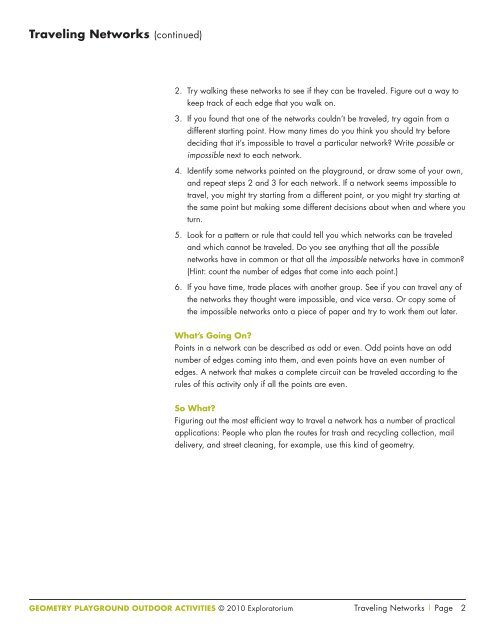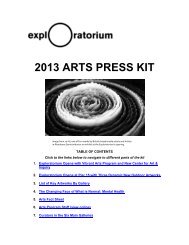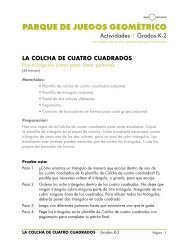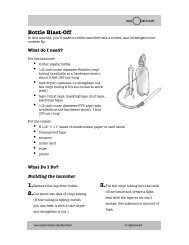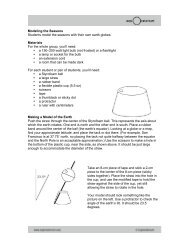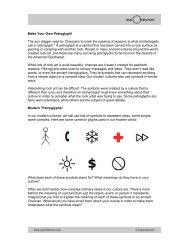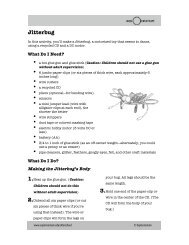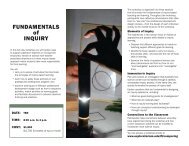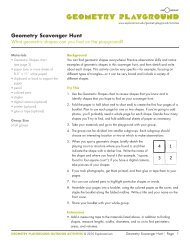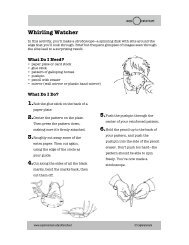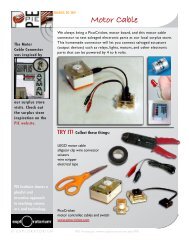Traveling Networks - Exploratorium
Traveling Networks - Exploratorium
Traveling Networks - Exploratorium
Create successful ePaper yourself
Turn your PDF publications into a flip-book with our unique Google optimized e-Paper software.
<strong>Traveling</strong> <strong>Networks</strong> (continued)<br />
GEOMETRY PLAYGROUND OUTDOOR ACTIVITIES © 2010 <strong>Exploratorium</strong><br />
2. Try walking these networks to see if they can be traveled. Figure out a way to<br />
keep track of each edge that you walk on.<br />
3. If you found that one of the networks couldn’t be traveled, try again from a<br />
different starting point. How many times do you think you should try before<br />
deciding that it’s impossible to travel a particular network? Write possible or<br />
impossible next to each network.<br />
4. Identify some networks painted on the playground, or draw some of your own,<br />
and repeat steps 2 and 3 for each network. If a network seems impossible to<br />
travel, you might try starting from a different point, or you might try starting at<br />
the same point but making some different decisions about when and where you<br />
turn.<br />
5. Look for a pattern or rule that could tell you which networks can be traveled<br />
and which cannot be traveled. Do you see anything that all the possible<br />
networks have in common or that all the impossible networks have in common?<br />
(Hint: count the number of edges that come into each point.)<br />
6. If you have time, trade places with another group. See if you can travel any of<br />
the networks they thought were impossible, and vice versa. Or copy some of<br />
the impossible networks onto a piece of paper and try to work them out later.<br />
What’s Going On?<br />
Points in a network can be described as odd or even. Odd points have an odd<br />
number of edges coming into them, and even points have an even number of<br />
edges. A network that makes a complete circuit can be traveled according to the<br />
rules of this activity only if all the points are even.<br />
So What?<br />
Figuring out the most efficient way to travel a network has a number of practical<br />
applications: People who plan the routes for trash and recycling collection, mail<br />
delivery, and street cleaning, for example, use this kind of geometry.<br />
<strong>Traveling</strong> <strong>Networks</strong> | Page 2


